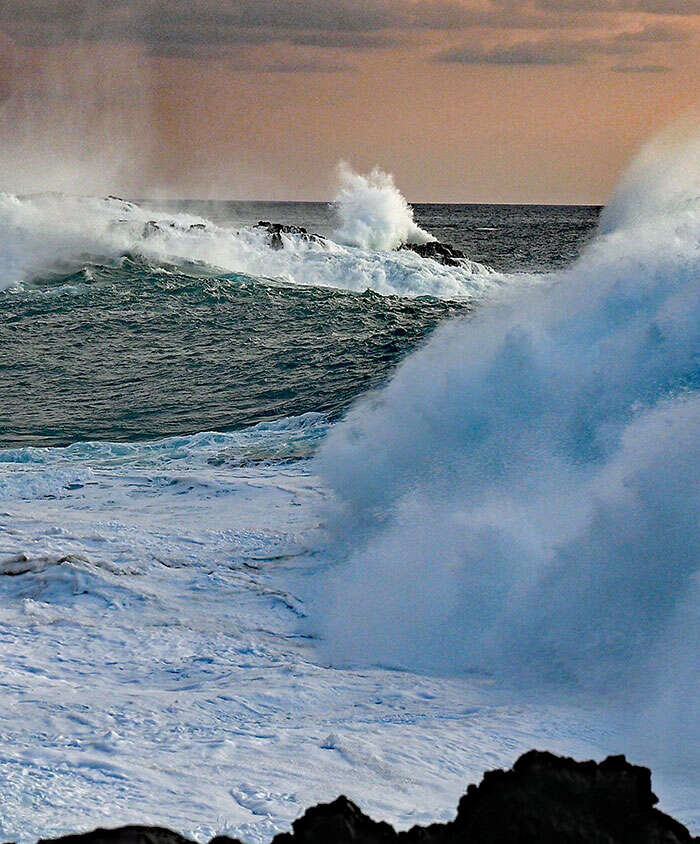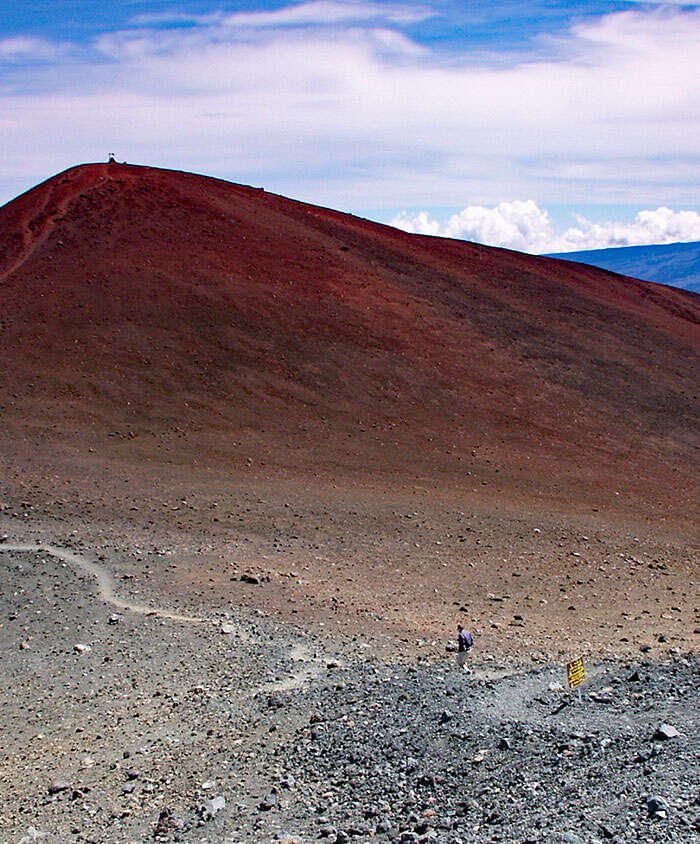Big Island Basics

The Big Island is, well, really big! We are here to help.
It takes over 7 hours just to drive the entire 300-mile coastal route without stopping. Exhausting. Unfortunately, visitors learn this the hard way, trying to see it all in one day, which you can do on any other Hawaiian island.
We have explored, traversed, and driven every road in every combination possible. And our advice is to break up the island into sections, as we have done with our tours offered here. It is simply too much to see it all in one day while allowing enough time to take in the magnificent splendors that each destination deserves. Twelve hours in a van for a circle island tour is a long time and tiring. With that in mind, our excursions were developed to be at most 8 hours from pickup to dropoff. This allows you to truly take in what the island offers at a more reasonable pace and reflect on your day while enjoying a fabulous dinner at one of our many fine restaurants.
When it comes to the Big Island, our motto, “more of less rather than less of more,” could not ring more true. The island isn’t going anywhere. If you missed something, you can see it another day or on another trip.
We hope that you do choose to book tours with us, and look forward to meeting you and allowing us to show off our amazing island.
The Big Island is extraordinarily diverse and unique.
There are 15 climatic zones on earth. The Big Island has 10 of them.
The Big Island is maybe the only place on earth where you can drive to the summit of Mauna Kea at 13,796 feet, fill up your pickup with snow, and have a snowball fight at the beach in less than 2 hours later. Residents in Hilo are known for making snowmen in their front yards, although the wintery scene is only fleeting.
There’s a lake near the summit of Mauna Kea called Lake Waiau. It gets very little rain up there, and no rivers to feed it. How does it exist? The Big Island is so tall that an ice cap formed during the last ice age. The volcano erupted under the ice, causing the normally porous volcanic rock to be less so. It is believed that a major source of this water is the melting of this ice cap.
From the leeward to windward sides, rainfall ranges from under 10 inches a year in the Waikoloa area to 280 inches in Hilo in just over 60 miles. Comparatively, Seattle gets about 40 inches a year, which is just one-seventh of what Hilo receives. And you thought Seattle was wet.


The Majestic Scale and Evolution of the Big Island
At about the size of Connecticut, you can fit all the other major Hawaiian islands inside the Big Island. Mauna Loa is, quite simply, the biggest thing on earth. At over 32,000 feet from its base below the Pacific Ocean to its 13,677-foot summit, it dwarfs Mount Everest at 29,000 feet. At 10,000 cubic miles of rock, it also dwarfs the entire Sierra Nevada range.
The Hawaiian islands evolved, and continue to evolve from a hotspot in the Earth’s mantle, with 137 islands and atolls stretching over a distance of 1600 miles in the middle of the Pacific Ocean. The Big Island formed from 5 volcanoes that pierced the surface of the ocean some 500,000 years ago. These consist of Kohala to the far north, with Hualalai, Mauna Kea, Mauna Loa, and Kilauea at the far southeast. Only Kohala is considered to be extinct. In comparison, Kauai, at the far northwest of the main 8 Hawaiian islands, is over 5 million years old and is considered “middle-aged” with its erosion and lush vegetation. The Big Island is still growing, raw and rugged in its infancy.

